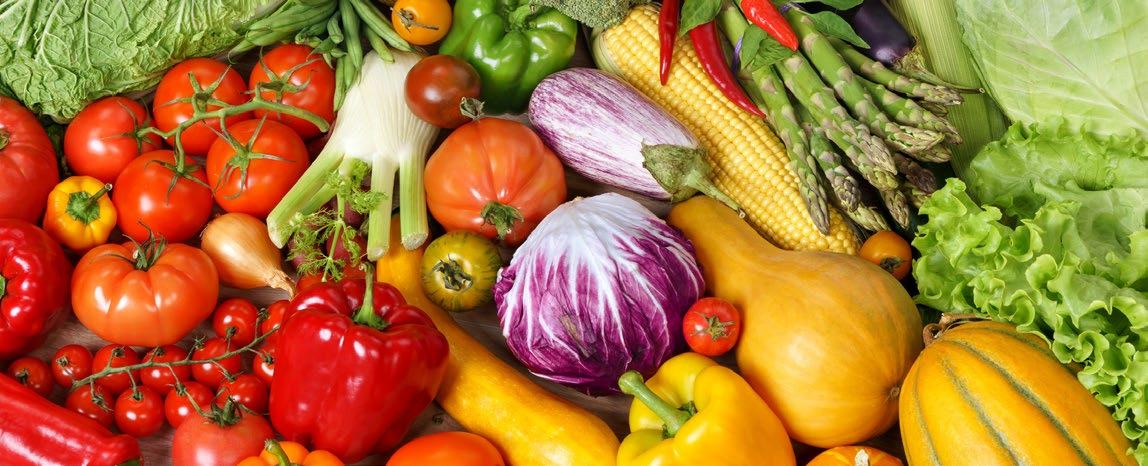
5 minute read
Raspberries
Everything You Need to Know About Growing Raspberries
MARK ANDERSON
Advertisement
ONE OF MY VERY FAVORITE fruits, raspberries, come in more colors than you think: red, purple, yellow, and black. They grow from perennial roots that produce mostly thorny stems called canes that grow tall and leafy the first year, then produce fruit the second summer. Some varieties, known as everbearing, can produce two crops on the same canes, one in the first fall and the second the next summer. Raspberry plants need a cold winter, cool, moist spring weather, and a gradual transition to warmer summer temperatures. They are perfect for Cache Valley!
Red raspberries are most commonly grown. Yellow types are mutations of the
owner, Anderson’s Seed and Garden red varieties. Black raspberries have blueblack fruit that is firmer and have more seeds than the more common varieties. Purple raspberries are crosses between black and red raspberries. Raspberries can grow very aggressively, and if not well tended or pruned properly, they can become weedy, overgrown, invasive, and problematic. However, with some care, they can be one of the most delicious and delightful additions to any garden.
Plant in an open site in full sun, or a little late afternoon shade if you live in a hot summer climate. Pick a location with good soil drainage, they do well in raised garden beds too. Raspberries like cooler temperatures during late spring and early summer, so a heavy mulch will help maintain cooler soil and consistent moisture content. Raspberries also prefer deep, well-drained soil with a high organic matter content — the less clay the better. Sandy soils work fine, but avoid heavy clay soils if possible. Use heavy mulches to prevent weeds, keep the soil consistently moist, and maintain cooler soil temperatures. In Cache Valley, raspberries are highly susceptible to iron chlorosis. Acidifying the soil each year with sulfur will not only help correct iron deficiency, but also assist with fruit production.
Early spring, after the last hard frost in cold climates, is the best time to plant. Our general rule of thumb: Only plant
Feed your family for $30 a year.
We’re serious when we say you can feed your family for a year on $30-worth of vegetable seeds. If you have a 50X50 foot garden (2500 square feet), we can help you fill it with about $30-worth of vegetable seeds. All it takes is a little effort and a little know-how. Come on in before spring planting is here. We’ll provide the know-how, and you can make the effort. Anderson’s Seed and Garden 69 West Center, Logan • 435-752-2345

raspberries in months that have an R in the name, like ApRil or SeptembeR. No planting in May-August. Make sure to position crowns about 1” below the surface when backfilling. Space plants 2 to 3 feet apart and all rows should be 8 to 10 feet apart.
Make sure to provide regular water throughout the growing season, usually a deep watering every 5-10 days, depending on heat and sun exposure. Drip or soaker systems are preferable, but overhead sprinklers will work fine.
Use a balanced fertilizer with micronutrients in early spring before the new growth begins to emerge to maintain consistent growth and fruit production. Plan on one pound (about two cups of fertilizer) for a 30-foot row. A second, light application just after fruit set will help keep the plants growing and boost productivity. Some growers will apply a third application after harvest, to encourage good growth from new shoots that will be producing fruit next year. If iron chlorosis occurs, use a chelated iron supplement like EDDHA 6% Iron. Raspberries prefer a more acidic soil, so yearly or even biannual applications of sulfur can help maintain a lower pH and keep iron freely available to the plants.
Raspberry roots are perennial, meaning once established, they will come back year after year. The canes, however, are mostly biennial — they grow the first year, and produce flowers and fruit the second, then they should be removed. When pruning raspberries, it is important to know the difference between one and two-year-old growth.
For summer-bearing raspberries, leave the canes unpruned the first summer. In late fall or very early spring (when the canes are dormant), trim the first year’s growth back to 4 to 5 feet tall. Also, remove any weak, damaged or diseased canes. New growth will sprout from the ground each spring to replace the canes that have already fruited. After harvest season, cut the two-year-old canes that just produced fruit, right to the ground, allowing the new growth to take its place.
Everbearing varieties fruit the first fall on the top third of the cane, then again in the second summer on the lower two-thirds of the cane. Cut the upper third of the cane back after harvest; cut out the lower two-thirds to the ground after the second harvest the next summer. As an alternative, you can cut everbearing canes to the ground yearly in the fall after fruiting. You’ll sacrifice the summer crop, but it encourages a heavier and extended harvest the next late summer and into fall.

Pick the fruit when berries are fully developed, have deep, mature color, and are sweet to the taste. When mature, the fruit will separate easily from the plant. Fruit can get crushed easily if piled too deep on top of each other, so harvest with a broad, shallow container to prevent damage. Anticipate 10 to 25 pounds of fruit per 10 feet of row depending on variety, location, and growing season.
At first, growing raspberries might seem daunting, but once you get to know them, they really don’t take a lot of time or care to produce a lot of delicious fruit. I know I’ve been reluctant to plant them for a few years, because of the time requirements, but after putting all this information together for new gardeners, I think I might just be up for the challenge this year.










